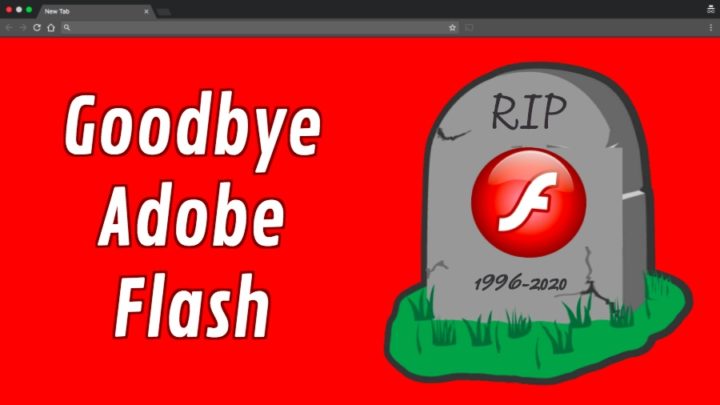What will happen when Chrome doesn’t support flash player anymore?
People who use flash have only one and a half years until it has gone.
Why would the once-popular Flash discontinued from browsers?.
At the end of 2020 Google Flash is going away from Google.
Flash is not fully gone from Google yet. But you can see an alert message with a turn off button that “ Flash player will no longer be supported after 2020 “ when re-enabling flash.
There are several industries like gaming, video, education built around flash technology. 3 years ago the users use flash is 80 percent, but today’s usage is only 17 percent. Problem is that even browsers support flash, flash itself will not be updated anymore.
This is because people are migrating to safe and efficient new technologies, which are also mobile supportive. So they can operate it anywhere. Firefox also blocked flash over security concerns. Even Adobe, Flash’s developer also begin to hate flash.
How can we run flash on a website?
When you enter a website that uses flash, you can see an alert “ plugin blocked” on the right side of the address bar. By clicking the lock icon on the left side and click allow to re-enable flash for the site. And click the reload button. But even reload the flash any flash content won’t be loaded. Click it’s play button to run individual flash-object, to run all-flash objects in that page, click the blocked plugin icon at the right side of the Omnibox and click “Run Flash this time.”
When you allow flash for a website, it is added to an allow list. But this chrome will erases this list when you restart the browser.
Chrome 76 Flash Block
Flash is getting removed from all browsers in December 2020, and Chrome is disabling Flash by default in July 2019. Flash has an official death clock.
Flash has many security flaws Adobe will stop supporting it and therefore browsers will also not support to prevent security flaws. Most Internet users will no longer be burdened with flash, it is good for your computer, tour battery, your security. Because of the flash, hackers and malware have in the past been able to find various ways of gaining access to your computer. It was poorly designed and insecure.
Mobile devices are flash free for years and they work fine for the most part. Soon everything will be that speedy. Flash has become pretty much unnecessary now.
Mostly, Flash runs on an old plugin API that was not designed with multi-process browsers or sandboxing and other more recent security measures in mind.
Because the security concern Google and Adobe agreed that completely replace flash with HTML 5.
Flash is a Proprietary runtime. Although you would typically see flash content in your browser, it is not being handled by your browser. Your browser just sees it as ‘plugin’- another application that can handle that part of the content. This causes a number of issues:
- Because it is proprietary, everyone is reliant on Adobe to provide a version of Flash for their platform (Mac on PPC; Mac on Intel; Windows 64; win32; etc) and to keep it up to date. Historically Adobe only supported a limited range of platforms and did not keep them all up to date.
- When mobile started to get big in the mid-2000’s Adobe found that Flash was a very poor fit for mobile devices- the core design made all sorts of assumptions based on desktop computing so things like battery life, framerate, audio in sync, installation etc were a real nightmare to get right.
- Because it acts as a browser plugin it has to fit in with whatever method that browser uses for dealing with plugins- just on Windows, for instance, you would have NPM for Firefox; Pepper for Chrome and ActiveX for IE- all duplicated of course, for 32 and 64-bit versions of Windows. Now consider Mac with 4 different architectures and its own 3 browsers, and… Not just a royal pain for Adobe but also for the browser manufacturers who could not really change their plugin architecture from what was already supported because the standard was essentially ‘set’.
- Because it is a separate runtime, any exploit cannot really be mitigated by the browser and potentially can take over your whole computer. Something similar happened for instance with Java applets. Eventually, everyone came to the conclusion that browser plugins are just inherently a bad idea and supporting a browser plugin architecture that enabled them was also a bad idea.
- The separate and proprietary runtime also meant it played very poorly with things like screen readers or other assistive technology for disabled people. When web-based services became mainstream and laws like the Americans With Disabilities Act and the Disability Discrimination Act (UK) started to come to bear, website operators found that they simply could not use Flash for anything meaningful on their websites, such as menu applets or they would be taken to court, and lose.
Historically there were probably three big events, besides the procession of legal cases (see above links), that marked the tipping point for Flash being sunsetted.
- Steve Job’s ‘Thoughts on Flash’ – basically closing the door to Flash on Apple mobile devices.
- The failure of the Blackberry Playbook – which had made the opposite gamble with strong support for flash on mobile – at around the same time
- Youtube deprecating flash
So basically you have a dated product tied to a single manufacturer, which nobody really liked, nobody could legally use for anything important anymore, was unsuited to mobile, fundamentally made all kinds of systems vulnerable to exploits and was being deprecated by the most visible platforms.

